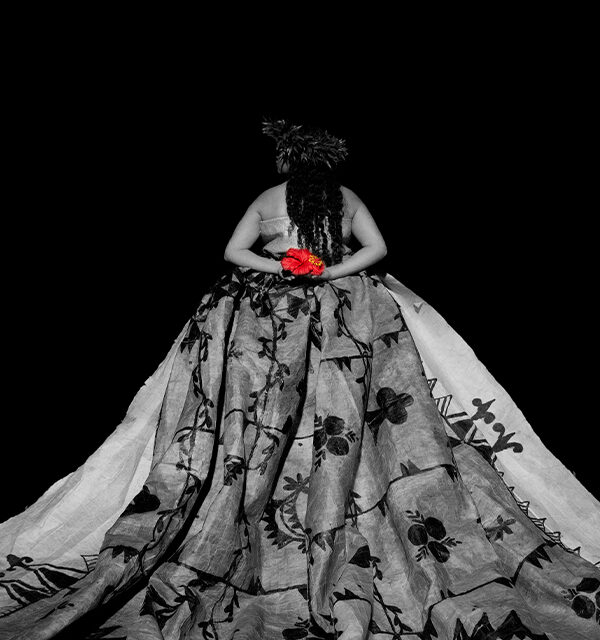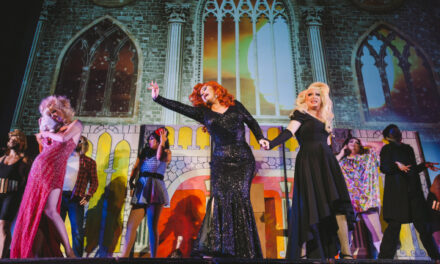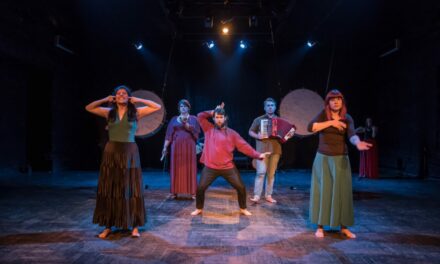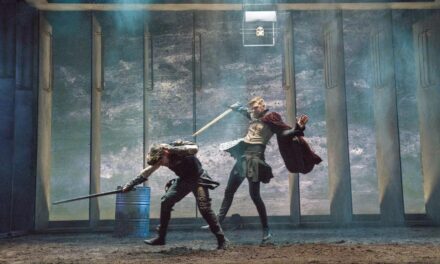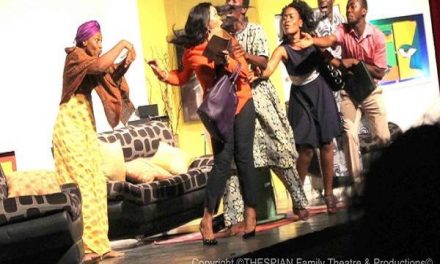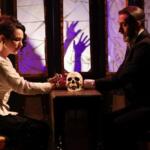Dream
The Black Friars Theatre Company, Mangere Arts Centre, Auckland, 18-21 September 2019
Where in the world would you see a production of Shakespeare’s A Midsummer Night’s Dream with a fully Polynesian cast of 37 actors? It could only happen in the heart of South Auckland, in the stylish, urbanesian setting of the Mangere Arts Centre: Nga Tohu o Uenuku. Re-titled Dream, this production adds value to Shakespeare’s play by re-imagining it as a Polynesian story. It is enormous fun, an expression of cultural solidarity that celebrates community, and empowers Polynesian youth. And it finds new relevance for Shakespeare’s ingenious theatricalization of the ambiguous spaces between dreaming and reality.
Dream is a massive collaborative venture for South Auckland’s Black Friars company. Founded 13 years ago, this is their fourth Shakespeare production. Their productions of classical plays complement their other work set in the contemporary Pacific. From its beginnings in schools, Black Friars has become a large extended family of performing artists which celebrates the creativity and invention bursting out of South Auckland. For the last three years they have had a youth focus with the Southside Rise project which created three productions with students from 14 South Auckland schools which aimed to “re-story the Southside”. In the Dream programme, co-director and producer Michelle Johansson explains how The Black Friars counter the negative images often associated with South Auckland: “For all the times that Pasifika people are told that they can’t./ For all the times that the Southside is told that it’s no good./ For all the Mamas and Papas who teach us to reach back and pull forward./ For all of those committed to being the buzz and having the backs.” She writes that through Southside Rise, “young leaders have had a space to challenge stereotypes, to tell their stories, and to dream the future of their hood. It has been inspiring, exhausting and uplifting in equal measure.”
The project to build artistic leadership is exemplified in the collaborative approach to adapting and staging Shakespeare’s play. Dream is jointly directed by Michelle Johansson, Lauie Tofa, Billy Revell, Misipele Tofilau and Siosaia Folau, and several cast members double as choreographers and musical directors. This diversity suits the play, with its three distinct character groups, yet there’s also a unity to the production which is skillfully edited, fast paced and narratively clear.
Shakespeare’s A Midsummer Night’s Dream has a timeless quality as it intercuts the contrasting worlds of Ancient Greek and English mythologies with the ordinary working people of Shakespeare’s era. The feeling of existing in several different worlds at the same time transposes easily into a Pacific setting, where the families of the vast Polynesian migrations are well used to adapting to different cultural contexts. Since the 1950s, South Auckland has been a prime meeting place for all of the cultures of the Pacific. The experience of migration between cultures fits perfectly with the surreal juxtapositions of Shakespeare’s comedy.
As we enter the auditorium, a mix-tape of popular tunes about dreams and dreaming warms us up. There is a sense of excitement, a perceptible buzz in the audience, and a lot of children. Dream is a family-friendly production, so avoids the darker interpretations of the play. What we get instead is a palpable sense of a story about families and hierarchies in conflict with the dreams and desires of young people. The passionate disputes between parents, children and other authority figures cause hilarious howls of recognition from the audience. Even the utilitarian set of screens, rostra and stylized shrubbery gets a gasp from the audience when illuminated with thousands of fairy lights. The interval announcement – five and a half minutes – gets a big laugh but also results in a remarkably efficient break.
The audience relishes the cheekiness and dexterity of the storytelling, cheering on and calling out to the actors. A pre-school child sitting directly in front of me keeps checking in with her mother to make sure she’s getting the plot right. When the magic flower is applied and both Lysander and Demetrius fall in love with Helena she squeals with a mix of horror and delight. As I watch the penny drop with her at each romantic mix-up, it confirms both the skill of Shakespeare’s dramaturgy and the clarity of Black Friars’ interpretation.
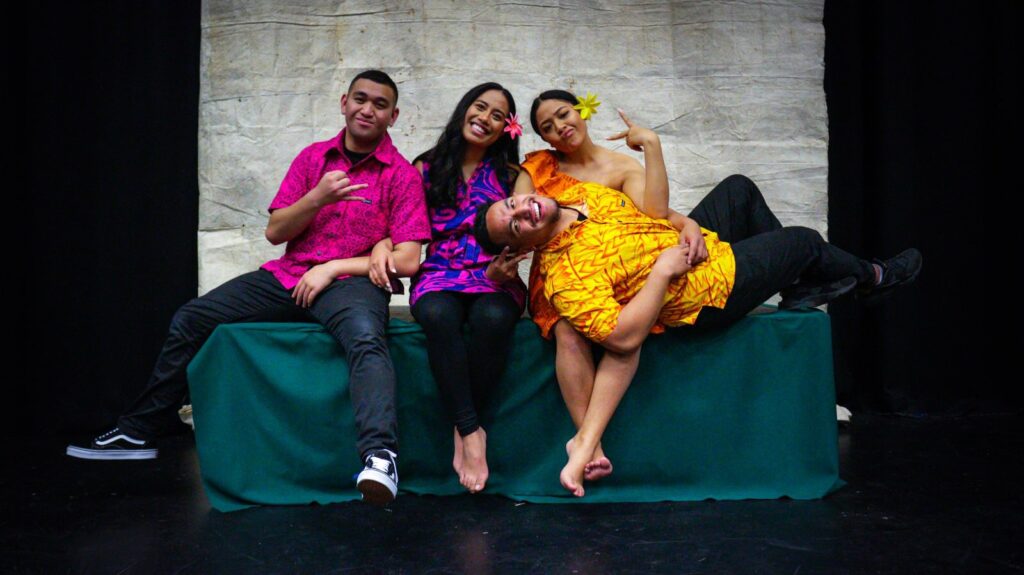
The Lovers in Dream. The Black Friars Theatre, Mangere Arts Centre, New Zealand (2019). Photo credit: Josh Talakai
This is a tight and light ensemble production, where some of the most thrilling sequences have nothing to do with Shakespeare. Each world in the play is introduced through stunning Pacific dance and chant sequences, with influences from Samoa, Tonga, Niue, and Hawai’i. The Fairies are clearly located through costume in the world of Ancient Polynesia, while the Mechanicals – a huge all-male chorus dressed in high-vis vests and hard hats – are solidly in the here and now. Theseus’s court (as in the original play) seems to exist simultaneously in the past and in the present, with the four lovers in their flash contemporary Polynesian fashions alongside Theseus and Hippolyta in more formal garb.
To’asavili Telea transforms the patriarch Egeus into a credibly stern Polynesian Mum, who invokes the wrath of “Ancient Polynesia” on her daughter. The romantic confusions in the play expose the fickleness and contradictions of young love, and this is particularly apparent in Agnes Pele’s hilariously narcissistic Hermia, who is cruelly brought down to earth when both men reject her. Irene Folau as Helena is marvelously self-deprecating in contrast, and the rivalry between Lysander (Tito Finau) and Demetrius (Rulon Brown) is highly physical and engaging. Denyce Su’a and Lauie Tofa both have the necessary status for the fairy royals Titania and Oberon, and their clashes are truly titanic. They are also gifted comedians and extract every ounce of humor from each situation. Arizona Leger as Puck is a playful and engaging presence throughout. The fairies Peaseblossom (Punipuao Lavea), Cobweb (Patrick Alesana) and Mustardseed (Chamaney Lavea/Lijah Mavaega) provide some real magic in their superb, three-part harmony soul singing.
Dream contrasts female and male energies using the dynamic movement languages of the Pacific. A large female chorus herald Titania’s first entrance performing a delicate and graceful siva. The all-male mechanicals could have stepped out of any industrial site in South Auckland, but display precision teamwork that rivals the All Blacks. Their perfectly coordinated percussion sequences with everyday objects and slap dancing are performed with joy and great skill. Lined up together in the “Pyramus and Thisbe” play they make the most convincing Wall I’ve ever seen. Misipele Tofilau gets great comic mileage from the contrast between his solidly masculine Francis Flute and the doomed heroine Thisbe. Siosaia Folau as Bottom presents a superb clown performance, working with and through the audience to get the most out of the familiar gags and freely formulating new ones.
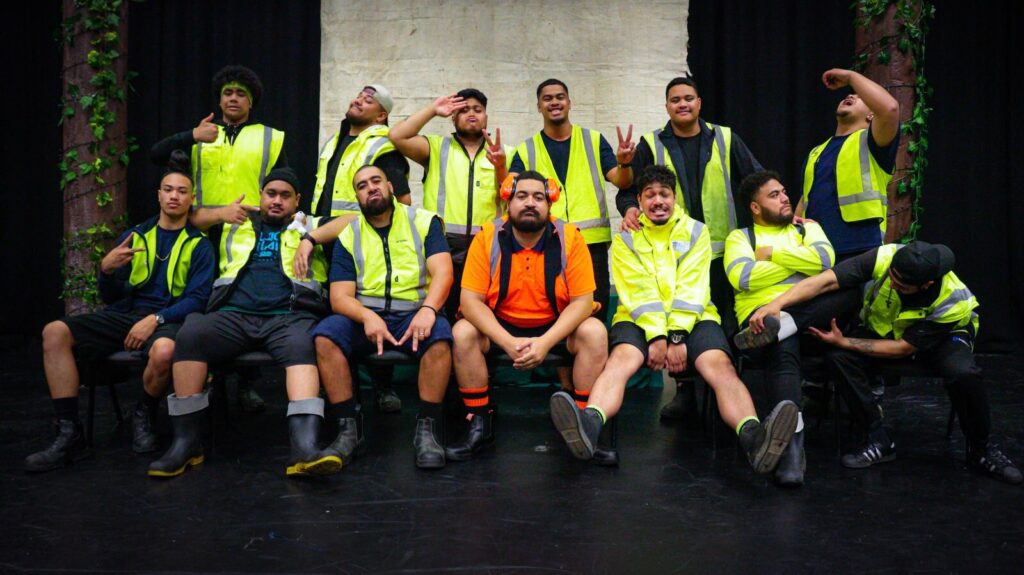
The Mechanicals in Dream. The Black Friars Theatre, Mangere Arts Centre, New Zealand (2019). Photo credit: Josh Talakai
The reinvention of the play into a Polynesian context makes perfect sense thematically and performatively. Black Friars’ Dream “re-stories” Shakespeare in ways that are theatrically alive, connected to the local, empowering for the performers and deeply invested in its community. For those who care about the future resilience of the young people of South Auckland, Shakespeare might be largely irrelevant. What matters is the dream, to keep dreaming, to make your dreams reality.
This post was written by the author in their personal capacity.The opinions expressed in this article are the author’s own and do not reflect the view of The Theatre Times, their staff or collaborators.
This post was written by David O'Donnell.
The views expressed here belong to the author and do not necessarily reflect our views and opinions.

